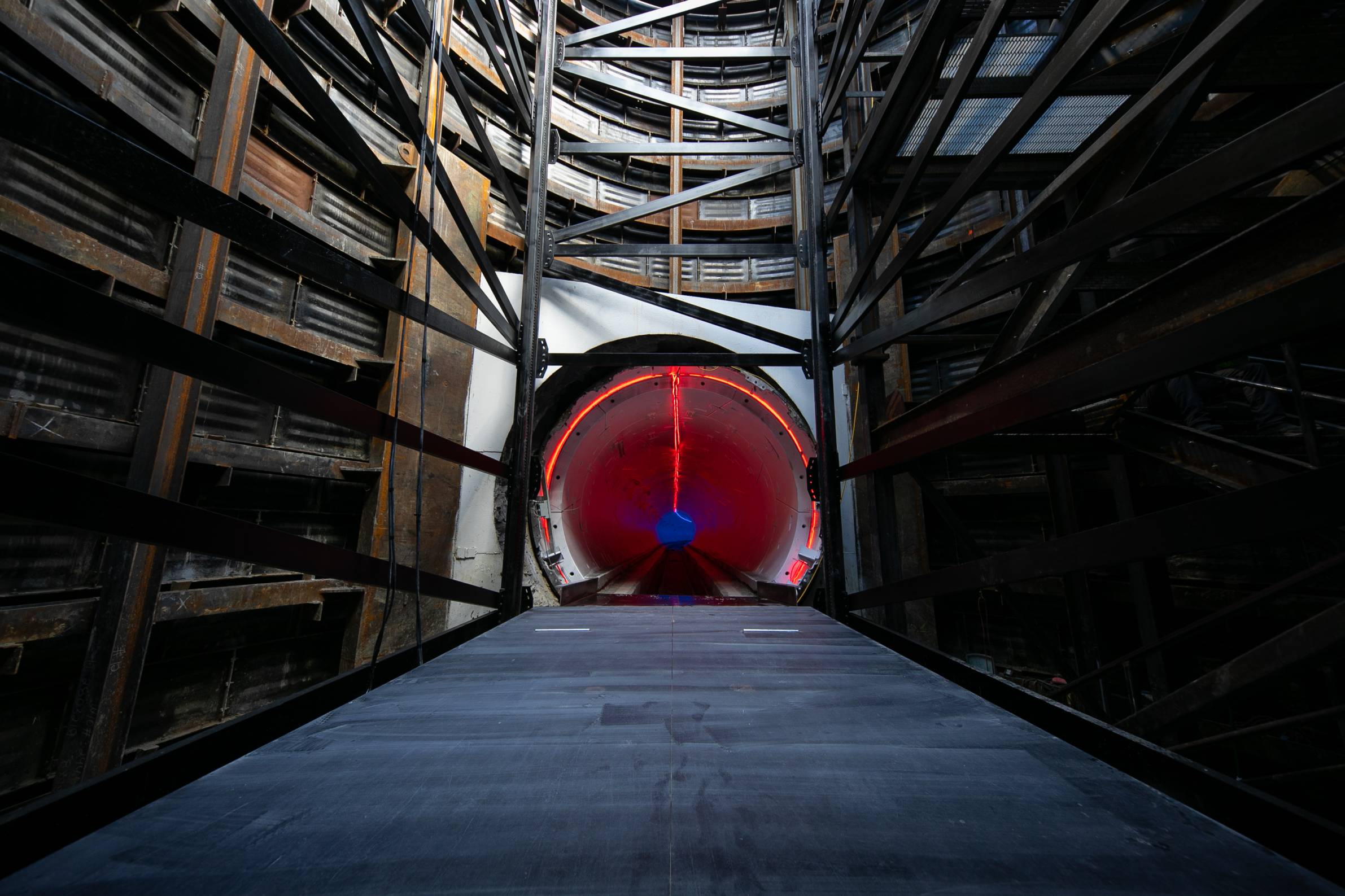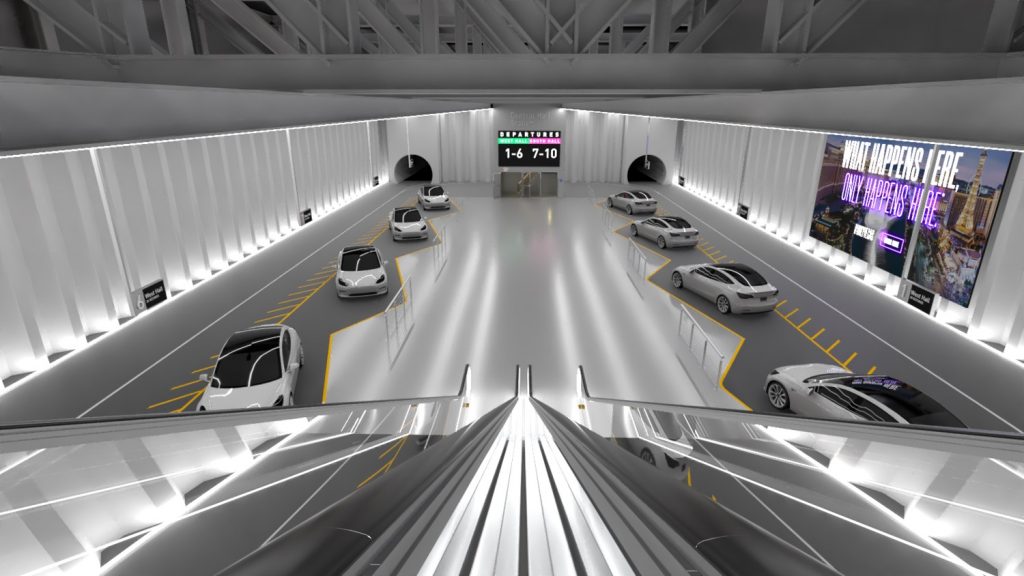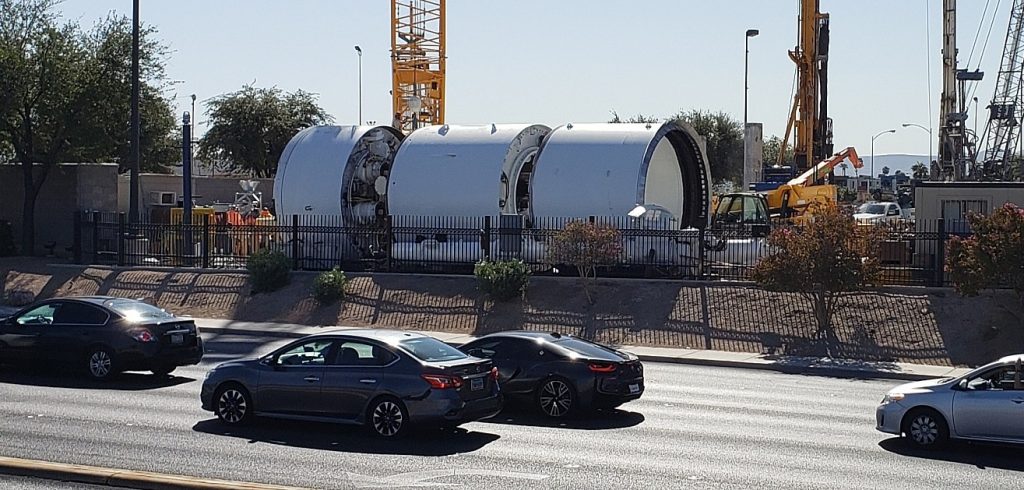

News
The Boring Company skeptics are making the same mistakes as Tesla and SpaceX critics
The Boring Company is truly becoming an Elon Musk-founded company in more ways than one. Apart from developing quite rapidly for a startup of its nature, the tunneling firm is also receiving quite a lot of criticism from avid skeptics, many of whom seem to be under the impression that the Boring Company’s projects are pointless, or badly-planned at best.
Earlier this month, CNN Business published a piece on The Boring Company’s Las Vegas Convention Center loop system, which is poised to be opened early next year. The project was granted a $48.6 million contract but is expected to cost a total of $52.5 million, and it involves two mile-long tunnels where Teslas could ferry passengers from one side of the Las Vegas Convention Center complex to the other.
Needless to say, several individuals consulted by the news agency were extremely skeptical of The Boring Company’s vision. Christof Spieler, a lecturer at Rice University who researches transit and urban planning, sharply criticized the tunneling startup’s concepts, arguing that the Loop system seems poorly thought-out. “These feel like the kind of renderings an architecture student would do for their one-semester project. I don’t see any evidence that this has really been thought through in terms of how it would function,” he said.

Explaining further, Spieler remarked that the LVCC Loop’s renderings make the system look more like taxi-loading areas. With such a system in place, the lecturer noted that issues would likely arise when the system is in operation, such as cars jockeying past each other to pull in and out, which would, in turn, adversely affect the system’s operations. He also noted that the renderings do not seem to show any barriers that would block unauthorized cars from entering the tunnels.
Ultimately, Spieler noted that a standard people mover is still a superior solution, as passengers do not need to duck to board vehicles and they could also hold their luggage instead of accessing a car’s trunk. “It seems like car-thinking applied to a transit problem that we already know how to solve,” he said.
Gerry Tierney, who co-directs the mobility lab at Perkins&Will, which has designed transit systems in North America and the Middle East, was bolder in his criticism of The Boring Company. He took issue with the system’s use of Teslas, calling the idea “comically inefficient” and refusing to call the LVCC Loop a transit system. “This is not a transit system. It’s a system for driving electric vehicles underground,” he said, adding that Musk’s idea is pretty much what would happen if intricate transit systems like the London Underground replaced its subway trains with cars.

While The Boring Company’s technology is yet to be proven, it also seems pretty careless to completely discount the LVCC Loop’s potential even before it could be tested. The Boring Company and its technology are not being developed by a random group of unqualified individuals, after all, and Elon Musk himself has proven over the years that even conventionally insane ideas–such as landing the first stage of an orbital rocket on a drone in the middle of the ocean or scaling the production of a mass-market electric car–could be feasible if enough work is put into them.
Overall, the tunneling startup’s skeptics seem to be making the exact same mistakes as those who were also critical of Musk’s previous projects in SpaceX and Tesla. Musk was not joking when he remarked that the idea of using Teslas in tunnels is more profound than it sounds. This is partly because The Boring Company’s innovations are not really its people-movers, it is the tunnels themselves. While the use of all-electric vehicles in the Loop systems is a key part of the Boring Company’s vision, the startup’s true disruption lies in the ways that it could build tunnels far quicker and far cheaper than any other company in the industry.
The Boring Company intends to accomplish these goals with rather simple solutions. Smaller tunnels are faster to build, so the tunneling startup designed its tunnels to accommodate smaller vehicles. All-electric cars are used so that the tunnels do not require an extensive system designed to handle emissions from vehicles that use it. The Boring Company’s tunnel boring machines (TBMs) are also optimized consistently, making them progressively faster and cleaner to use. These may all seem like little adjustments to conventional tunneling practices, but each one represents a step towards a potential future where tunnels could be built at scale rapidly, and perhaps even autonomously.
It is easy to mock or dismiss the ideas of people like Elon Musk and his teams at The Boring Company, SpaceX, and Tesla. But inasmuch as Musk’s companies make it pretty easy to target them due to their goals and nature, SpaceX and Tesla’s history shows that more often than not, it is a mistake to bet against Musk and his team of visionaries, almost all of whom seem to have the tendency to think outside the box by default. As for the Boring Company’s LVCC Loop, there seems to be a good chance that it could outperform expectations, with recent simulations showing that the system could move about 13,000 people an hour, and that’s with the system operating nowhere near their limit.
Elon Musk
Tesla Supercharger Diner food menu gets a sneak peek as construction closes out
What are you ordering at the Tesla Diner?

The Tesla Supercharger Diner in Los Angeles is nearing completion as construction appears to be winding down significantly. However, the more minor details, such as what the company will serve at its 50s-style diner for food, are starting to be revealed.
Tesla’s Supercharger Diner is set to open soon, seven years after CEO Elon Musk first drafted the idea in a post on X in 2018. Musk has largely come through on most of what he envisioned for the project: the diner, the massive movie screens, and the intended vibe are all present, thanks to the aerial and ground footage shared on social media.
We already know the Diner will be open 24/7, based on decals placed on the front door of the restaurant that were shared earlier this week. We assume that Tesla Optimus will come into play for these long and uninterrupted hours.
The Tesla Diner is basically finished—here’s what it looks like
As far as the food, Tesla does have an email also printed on the front door of the Diner, but we did not receive any response back (yet) about what cuisine it will be offering. We figured it would be nothing fancy and it would be typical diner staples: burgers, fries, wings, milkshakes, etc.
According to pictures taken by @Tesla_lighting_, which were shared by Not a Tesla App, the food will be just that: quick and affordable meals that diners do well. It’s nothing crazy, just typical staples you’d find at any diner, just with a Tesla twist:
Tesla Diner food:
• Burgers
• Fries
• Chicken Wings
• Hot Dogs
• Hand-spun milkshakes
• And more https://t.co/kzFf20YZQq pic.twitter.com/aRv02TzouY— Sawyer Merritt (@SawyerMerritt) July 17, 2025
As the food menu is finalized, we will be sure to share any details Tesla provides, including a full list of what will be served and its prices.
Additionally, the entire property appears to be nearing its final construction stages, and it seems it may even be nearing completion. The movie screens are already up and showing videos of things like SpaceX launches.
There are many cars already using the Superchargers at the restaurant, and employees inside the facility look to be putting the finishing touches on the interior.
🚨 Boots on the ground at the Tesla Diner:
— TESLARATI (@Teslarati) July 17, 2025
It’s almost reminiscent of a Tesla version of a Buc-ee’s, a southern staple convenience store that offers much more than a traditional gas station. Of course, Tesla’s version is futuristic and more catered to the company’s image, but the idea is the same.
It’s a one-stop shop for anything you’d need to recharge as a Tesla owner. Los Angeles building permits have not yet revealed the date for the restaurant’s initial operation, but Tesla may have its eye on a target date that will likely be announced during next week’s Earnings Call.
News
Tesla’s longer Model Y did not scale back requests for this vehicle type from fans
Tesla fans are happy with the new Model Y, but they’re still vocal about the need for something else.

Tesla launched a slightly longer version of the Model Y all-electric crossover in China, and with it being extremely likely that the vehicle will make its way to other markets, including the United States, fans are still looking for something more.
The new Model Y L in China boasts a slightly larger wheelbase than its original version, giving slightly more interior room with a sixth seat, thanks to a third row.
Tesla exec hints at useful and potentially killer Model Y L feature
Tesla has said throughout the past year that it would focus on developing its affordable, compact models, which were set to begin production in the first half of the year. The company has not indicated whether it met that timeline or not, but many are hoping to see unveilings of those designs potentially during the Q3 earnings call.
However, the modifications to the Model Y, which have not yet been officially announced for any markets outside of China, still don’t seem to be what owners and fans are looking forward to. Instead, they are hoping for something larger.
A few months ago, I reported on the overall consensus within the Tesla community that the company needs a full-size SUV, minivan, or even a cargo van that would be ideal for camping or business use.
Tesla is missing one type of vehicle in its lineup and fans want it fast
That mentality still seems very present amongst fans and owners, who state that a full-size SUV with enough seating for a larger family, more capability in terms of cargo space for camping or business operation, and something to compete with gas cars like the Chevrolet Tahoe, Ford Expedition, or electric ones like the Volkswagen ID.BUZZ.
We asked the question on X, and Tesla fans were nearly unanimously in support of a larger SUV or minivan-type vehicle for the company’s lineup:
🚨 More and more people are *still* saying that, despite this new, longer Model Y, Tesla still needs a true three-row SUV
Do you agree? https://t.co/QmbRDcCE08 pic.twitter.com/p6m5zB4sDZ
— TESLARATI (@Teslarati) July 16, 2025
Here’s what some of the respondents said:
100% agree, we need a larger vehicle.
Our model Y is quickly getting too small for our family of 5 as the kids grow. A slightly longer Y with an extra seat is nice but it’s not enough if you’re looking to take it on road trips/vacations/ kids sports gear etc.
Unfortunately we…
— Anthony Hunter (@_LiarsDice_) July 17, 2025
Had to buy a Kia Carnival Hybrid because Tesla doesn’t have a true 3 row vehicle with proper space and respectable range. pic.twitter.com/pzwFyHU8Gi
— Neil, like the astronaut (@Neileeyo) July 17, 2025
Agreed! I’m not sure who created this but I liked it enough to save it. pic.twitter.com/Sof5nMehjS
— 🦉Wise Words of Wisdom – Inspirational Quotes (IQ) (@WiseWordsIQ) July 16, 2025
Tesla is certainly aware that many of its owners would like the company to develop something larger that competes with the large SUVs on the market.
However, it has not stated that anything like that is in the current plans for future vehicles, as it has made a concerted effort to develop Robotaxi alongside the affordable, compact models that it claims are in development.
It has already unveiled the Robovan, a people-mover that can seat up to 20 passengers in a lounge-like interior.
The Robovan will be completely driverless, so it’s unlikely we will see it before the release of a fully autonomous Full Self-Driving suite from Tesla.
Energy
Tesla launches first Virtual Power Plant in UK – get paid to use solar
Tesla has launched its first-ever Virtual Power Plant program in the United Kingdom.

Tesla has launched its first-ever Virtual Power Plant program in the United Kingdom. This feature enables users of solar panels and energy storage systems to sell their excess energy back to the grid.
Tesla is utilizing Octopus Energy, a British renewable energy company that operates in multiple markets, including the UK, France, Germany, Italy, Spain, Australia, Japan, New Zealand, and the United States, as the provider for the VPP launch in the region.
The company states that those who enroll in the program can earn up to £300 per month.
Tesla has operated several VPP programs worldwide, most notably in California, Texas, Connecticut, and the U.S. territory of Puerto Rico. This is not the first time Tesla has operated a VPP outside the United States, as there are programs in Australia, Japan, and New Zealand.
This is its first in the UK:
Our first VPP in the UK
You can get paid to share your energy – store excess energy in your Powerwall & sell it back to the grid
You’re making £££ and the community is powered by clean energy
Win-win pic.twitter.com/evhMtJpgy1
— Tesla UK (@tesla_uk) July 17, 2025
Tesla is not the only company that is working with Octopus Energy in the UK for the VPP, as it joins SolarEdge, GivEnergy, and Enphase as other companies that utilize the Octopus platform for their project operations.
It has been six years since Tesla launched its first VPP, as it started its first in Australia back in 2019. In 2024, Tesla paid out over $10 million to those participating in the program.
Participating in the VPP program that Tesla offers not only provides enrolled individuals with the opportunity to earn money, but it also contributes to grid stabilization by supporting local energy grids.
-

 Elon Musk1 day ago
Elon Musk1 day agoWaymo responds to Tesla’s Robotaxi expansion in Austin with bold statement
-

 News1 day ago
News1 day agoTesla exec hints at useful and potentially killer Model Y L feature
-

 Elon Musk2 days ago
Elon Musk2 days agoElon Musk reveals SpaceX’s target for Starship’s 10th launch
-

 Elon Musk3 days ago
Elon Musk3 days agoTesla ups Robotaxi fare price to another comical figure with service area expansion
-

 News1 day ago
News1 day agoTesla’s longer Model Y did not scale back requests for this vehicle type from fans
-

 News1 day ago
News1 day ago“Worthy of respect:” Six-seat Model Y L acknowledged by Tesla China’s biggest rivals
-

 News2 days ago
News2 days agoFirst glimpse of Tesla Model Y with six seats and extended wheelbase
-

 Elon Musk2 days ago
Elon Musk2 days agoElon Musk confirms Tesla is already rolling out a new feature for in-car Grok








